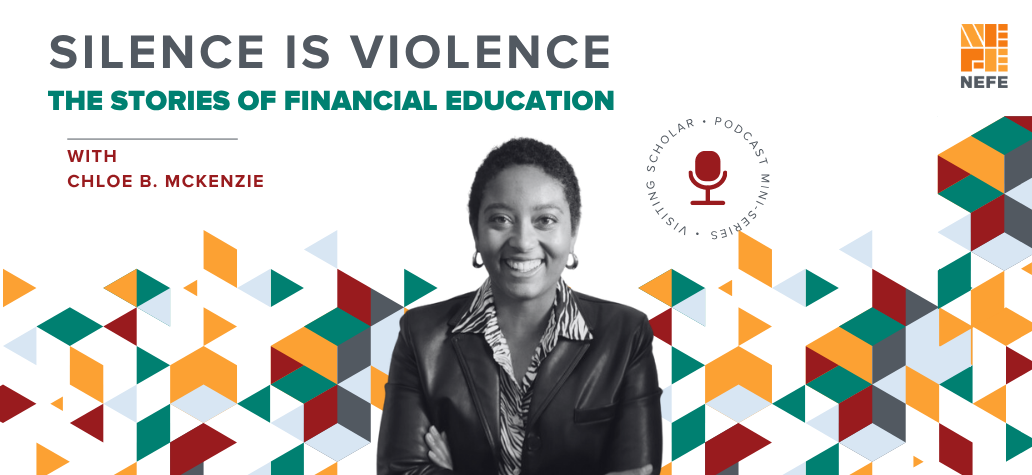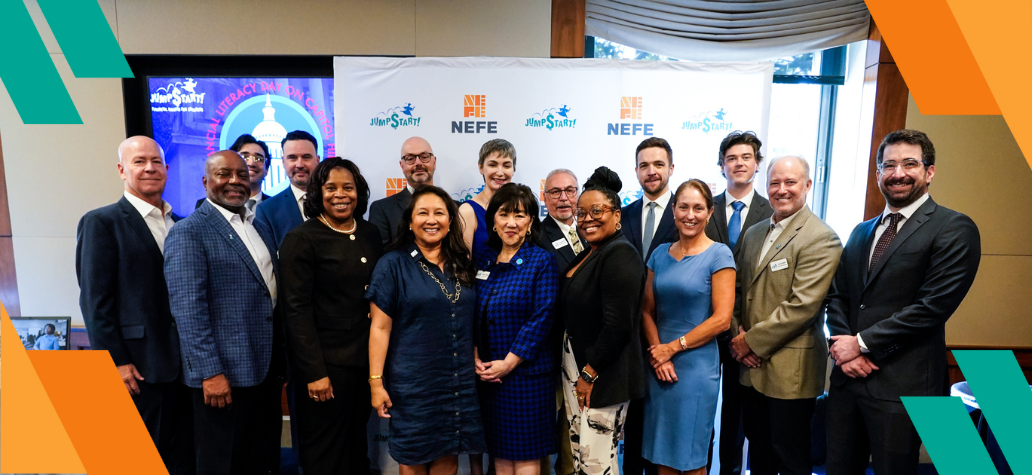In the first part of this series, I made an important distinction between non-participatory behavior that happened by choice, by design and by both. It is important to begin with this distinction again because when evaluating what financial trauma does to us, we must understand that limited or nonparticipation in the economy shows up in two ways:
- As a trauma response.
- As an indicator of the systemic abuse itself.
For this part of the series, we will consider the latter.
To refresh our understanding of the conceptual definitions I use, I define financial abuse as an event, action, or policy that inequitably reinforces the conditions that impair a person’s financial capability.
One of the most potent images used to justify the adverse financial experiences of people targeted by racism, sexism and other forms of oppression is the financially illiterate individual: An individual both apathetic to and unaware of what they could do to enjoy financial “freedom” and prosperity because of their own choices. Even in the last five years, works like “The Whiteness of Wealth” by Dorothy A. Brown and “The Sum of Us” by Heather McGhee have definitively discredited this myth. The outcome of limited or non-participation in the economy, often attributed to lack of financial savvy, actually results from being structurally positioned to experience these outcomes. But the caricature of the spendthrift, bratty millennial, or the lazy, financially illiterate, low-wage worker remains etched in many Americans’ psyches, available to rationalize mundane and terrible financial abuses on economically vulnerable people.
With this in mind, I considered the questions I asked about how I might measure nonparticipation again. I spent most of my time listing examples of nonparticipation and became most captured by examples relating to monitoring credit scores because so many of my qualitative inquiry respondents recalled being advised to focus on their credit more. Before thinking about measurement, I thought about identifying three things:
- The myth used to rationalize a structural financial abuse that could lead to a financially traumatic experience.
- The financial abuse itself (what was the actual act of abuse?).
- What are the indicators that the abuse adversely impacted someone (and I was most interested in looking for non-participatory behavior for the sake of this project).
If I could clearly narrate this, then I could continue to demonstrate that non-participatory behavior is an effective predictor of financial trauma, and therefore a driver of wealth inequality.
Part of my research in Philadelphia was to understand the unique struggle marginalized Philadelphians had against wealth inequality. When I began my qualitative inquiry, I would ask very open-ended questions to capture the multi-layered texture of their socioeconomic experiences. But, when I would go back to synthesize my interviews, I was struck by the consistency with which respondents would explain how they “knew [their] credit score[s], but [they] really didn’t.” When I would ask respondents whether they knew their credit scores, more than 89% provided what I call “yes and no” responses – responses that were too complex to fit squarely as a “yes” or a “no”. When I uncovered this initial insight, I decided to do follow-up interviews to unpack this.
More than half of respondents had been told in the last six months that they should monitor their credit score to improve their financial positions. For some, this advice was given because they were interested in purchasing a home within the next 12 months, but still the vast majority were told this “for no particular reason.”
The Financial Industry Regulatory Authority (FINRA) admits that many people do not know about the credit scoring system. When I first read that, in my pettiest voice, I responded, “Whose fault is that?” Many of the overviews about credit scores and the credit score system on financial institution websites detail what our three-digit scores mean and emphasize that our credit scores are a way to assess the financial risk we pose to lenders when we apply for credit. The information given seems straightforward and innocuous. However, it wasn’t until I began reflecting more on the respondents’ “yes and no” responses that I saw how easily our credit institutions rationalize the mundane abuse that is foundational to our entire credit score system: That consumers can rarely really know their credit score.
This admission is so casually disclosed:
The three major credit bureaus—Equifax®, TransUnion® and Experian®—use the FICO scoring model for their proprietary systems. Since each scoring system uses a slightly different statistical model, your score from each of the three will not be exactly the same. This is because lenders and other businesses report information to the credit reporting agencies in different ways, and the agencies may present that information through their proprietary systems differently.
Not only are we forced to accept that we have three different scores, but we are also forced to accept the fact that we only have an idea of how each of those scores is created, and worst of all we only know the scores we are given (which often are not the same as what lenders see). I interviewed several lenders who said, “I can say with absolute certainty that the score you see on whatever site you are using—whether that’s from the bureaus or your banks—is not the score that I’m seeing. You’ll see the score I see when I do a hard pull and then I’m legally obligated to share that score with you.”
The myth: You can monitor your credit score.
I became very annoyed that even I was content with this. That I had never reflected on how abusive this power imbalance really is or on how intentionally confusing and exhausting this makes the credit scoring system, which is already problematic.
So, what is the financial abuse here? The act of economic violence that all consumers are forced to experience. Information asymmetry.
It is truly perplexing—and harmfully anxiety-producing—how the official record of my financial choices is something I cannot access in totality without pulling it, which I can only do for free once in a twelve-month period. Moreover, it is damaging to my ability to make effective financial decisions when the information I am able to pull does not fully reflect or match what a lender would use to assess my financial risk as a borrower. This information asymmetry institutionalizes a power dynamic that was already imbalanced to begin with. If I cannot see what the lender sees, and their risk assessment practices are also ambiguous (if not secret), how am I not more vulnerable to structural inequity? The 2008 financial crisis is a case study on this, as many of the Black borrowers who lost the majority—if not all—of their wealth were refinancing customers, not new homebuyers. This means they were approached by predatory lenders who claimed they may or may not have qualified for certain programs because of their credit scores and other financial indicators.
During my follow-up interviews, I asked respondents to describe how it felt to both “know and not know” their credit scores. One respondent eloquently captured the harm of this phenomenon and influenced how I measure nonparticipation: “I feel trapped. It feels like I really don’t have the ability to be proactive like they advise me to be. Everything, when it comes to my credit score, has to be reactionary because I am not in control of the data that literally is all about me. I create the data they use to assess me as a risk, but by the time I get access to that information I’m left with the choices they essentially make for me. And I don’t want to make it seem like I have no agency in this. I do, but I don’t feel like I have the majority of the control for outcomes.”
This respondent adequately described what limited- or non-participation by design is. I learned that limited- or non-participation as a trauma response typically comes after an experience of forced limited- or non-participation. This particular respondent went on to explain that she no longer pulls her own credit. Instead, she merely waits to have to interact with the system since she cannot get the totality of the information she needs to feel like she can make a financial decision in her best interest until after a lender provides her the score they see after a hard credit pull. This subsequent form of nonparticipation—choosing to no longer monitor her score—is a trauma response. I will unpack the impact of this in the next part of the series.
But, the important insight is this: The forced limited participation—the information asymmetry—is causing harm. So much so that these respondents chose to participate even less as a response to this manufactured experience.
To measure limited- or non-participation by design we must look at financial experiences that occur that are actually confusing—and even dumb—but that we explain away with, “that’s how it’s always been done,” or, “that’s just how it’s been designed,” when questioning why they happen. Rent or some utility payments that don’t get reported to the credit bureaus are another example of institutionally mandated limited participation in the economy. When you do this exercise, you may be as overwhelmed as I am that the list seems never-ending.
I’ve said in many keynotes that limited or nonparticipation in our economic institutions and broader national economy is not a personality defect— it’s a trauma response. That is true, and limited or nonparticipation in our economy can also be policy decision. An institutionally-mandated outcome. A driver of the ever-widening wealth gap.
Having come to this conclusion, I was still concerned with how I might measure this. I felt like I needed to start measuring the harm it caused to the targeted individuals. But then, it seemed like capturing the trauma responses—limiting participation or not participating at all—is easier to track, so that I could derive the (harmful) economic impact from that response to narrate the broader implications this has on the wealth gap. Confusingly enough, I started there so that I could hopefully answer how I might measure this form of nonparticipation. That is the purpose of the next part of this series—to demonstrate the symbiotic entanglement of all of this. I was able to understand how to measure nonparticipation as a trauma response by more deeply understanding nonparticipation by design, and then I was able to understand how I might measure nonparticipation by design by more deeply understanding my respondents’ trauma responses.
Taken all together, the biggest takeaway for me was seeing why it is so difficult to close the wealth gap without placing financial trauma in context, and why inadequate solutions are so easy to celebrate because they seem progressive or revolutionary, when really they often further mask how we rationalize continued infringements on our financial wellbeing.



